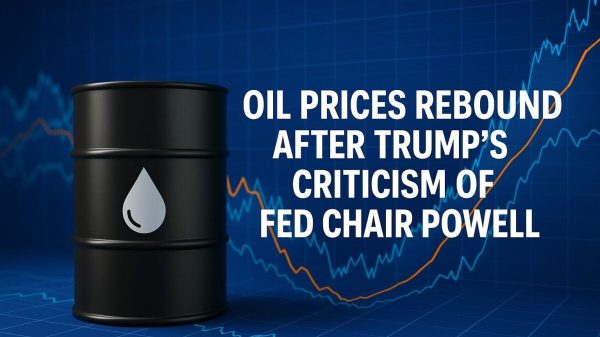Navigating Choppy Waters in the Oil Market
In the ever-volatile realm of oil trading, recent events in the Red Sea and Russia have sent shockwaves through the market, impacting prices and leaving traders on the edge of their seats. The trading oil landscape is once again proving its susceptibility to geopolitical tensions and unexpected disruptions. This article delves into the current scenario, examining the rise in oil prices due to Red Sea jitters and Russia’s unexpected move to cut exports, and explores the implications for traders and investors alike.
Red Sea Jitters Shake the Market
Over the weekend, the world’s major shipping firms, including giants like MSC and A.P. Moller-Maersk, made a pivotal decision to steer clear of the Suez Canal. Why? The Houthi militants in Yemen intensified their attacks on commercial vessels in the Red Sea, raising concerns about potential disruptions in oil supply chains. As a result, the global oil market witnessed a surge in uncertainty, pushing prices upward.
Brent crude futures saw an increase of 59 cents, marking a 0.8% rise to reach $77.13 a barrel. Simultaneously, U.S. West Texas Intermediate crude experienced a similar uptick, rising by 54 cents (0.8%) to settle at $71.97. These movements come after seven consecutive weeks of declining prices, sparked by the U.S. Federal Reserve’s signals that interest rate hikes may be a thing of the past, and cuts might be on the horizon.
An increasing number of corporations, BP among them, are halting shipments through the Red Sea in the wake of recent assaults on vessels by Houthi rebels.
BP attributed the decision to the “deteriorating security situation” but emphasized that the suspension is a temporary measure.
“The safety and security of our people and those working on our behalf is BP’s priority,” the company stated. “In light of the deteriorating security situation for shipping in the Red Sea, BP has decided to temporarily pause all transits through the Red Sea.”
BP’s move mirrors the actions of industry heavyweights such as Maersk, MSC based in Switzerland, and the French group CMA CGM, all of whom have opted to avoid the area.
In alignment with this cautious approach, Evergreen has also confirmed a temporary suspension of import and export services in Israel until further notice, citing security risks.
The decision to pause journeys through the Suez Canal commenced on Friday following attacks on vessels in the Red Sea orchestrated by Iran-backed Houthi militants in Yemen. This escalation in security concerns is prompting major players in the shipping and energy sectors to prioritize the well-being of their personnel and reevaluate transit routes in response to the evolving geopolitical landscape.
Russian Export Cuts Add Fuel to the Fire
While Red Sea tensions played a pivotal role in the recent surge, Russia’s unexpected announcement further fueled the flames. On Sunday, Moscow declared its intention to deepen oil export cuts in December, potentially exceeding the promised reduction by 50,000 barrels per day or more. This move, made earlier than anticipated, sent ripples through the market as the world’s largest oil exporters joined forces to stabilise global oil prices.
The decision came on the heels of Moscow’s suspension of about two-thirds of loadings of its primary export grade, Urals crude, from ports due to a storm and scheduled maintenance. This double whammy of supply constraints from both geopolitical tensions and logistical challenges sent shockwaves through the market, leaving traders reevaluating their strategies.
The Dollar’s Dance and Its Impact on Oil Prices
Adding an interesting dimension to the oil market equation, a weakened dollar played its part in supporting oil prices. Tina Teng, an analyst at CMC Markets, highlighted the connection, noting that a weaker dollar makes dollar-denominated oil more affordable for foreign buyers. This shift tends to reflect a heightened investor risk appetite, further influencing the dynamics of the oil market.
As traders grapple with the multifaceted factors influencing oil prices, the interplay between geopolitical events, export cuts, and currency fluctuations becomes a delicate dance that requires careful navigation. The market’s response to these interconnected elements underscores the need for traders to stay vigilant and adaptable in an environment where change is the only constant.
Navigating the Future – Opportunities Amidst Challenges
The recent surge in oil prices, fueled by Red Sea jitters and Russian export cuts, underscores the dynamic nature of the oil trading landscape. As traders and investors chart their course through these uncertain waters, the importance of staying informed and agile cannot be overstated. The term trading oil is not just a business endeavor; it’s a journey through unpredictable currents and unforeseen storms.
While challenges abound, so do opportunities. For those seeking to buy oil, the current scenario offers a unique backdrop to explore potential gains. Understanding the nuances of crude oil fractional distillation becomes paramount in deciphering the market’s response to geopolitical tensions and supply constraints.
For nations seeking a reliable source, the concept of a domestic oil supplier gains prominence amidst global uncertainties. Additionally, the pursuit of the cheapest oil becomes a strategic consideration, especially as market dynamics continue to evolve.
In this intricate dance of global forces, traders find themselves at the intersection of geopolitical events, economic shifts, and market sentiment. As the oil market continues to ride the waves of uncertainty, one thing remains clear – adaptability and a keen understanding of the ever-changing landscape will be the compass guiding successful ventures in the business of trading oil.
The post Navigating Choppy Waters in the Oil Market appeared first on FinanceBrokerage.

































